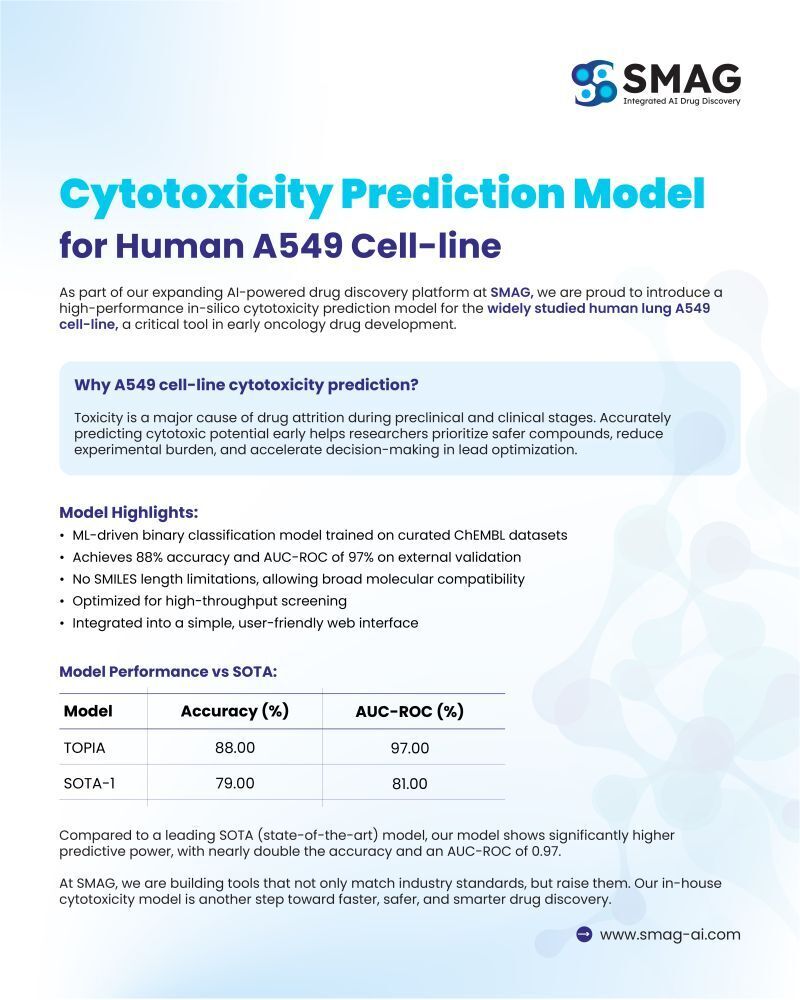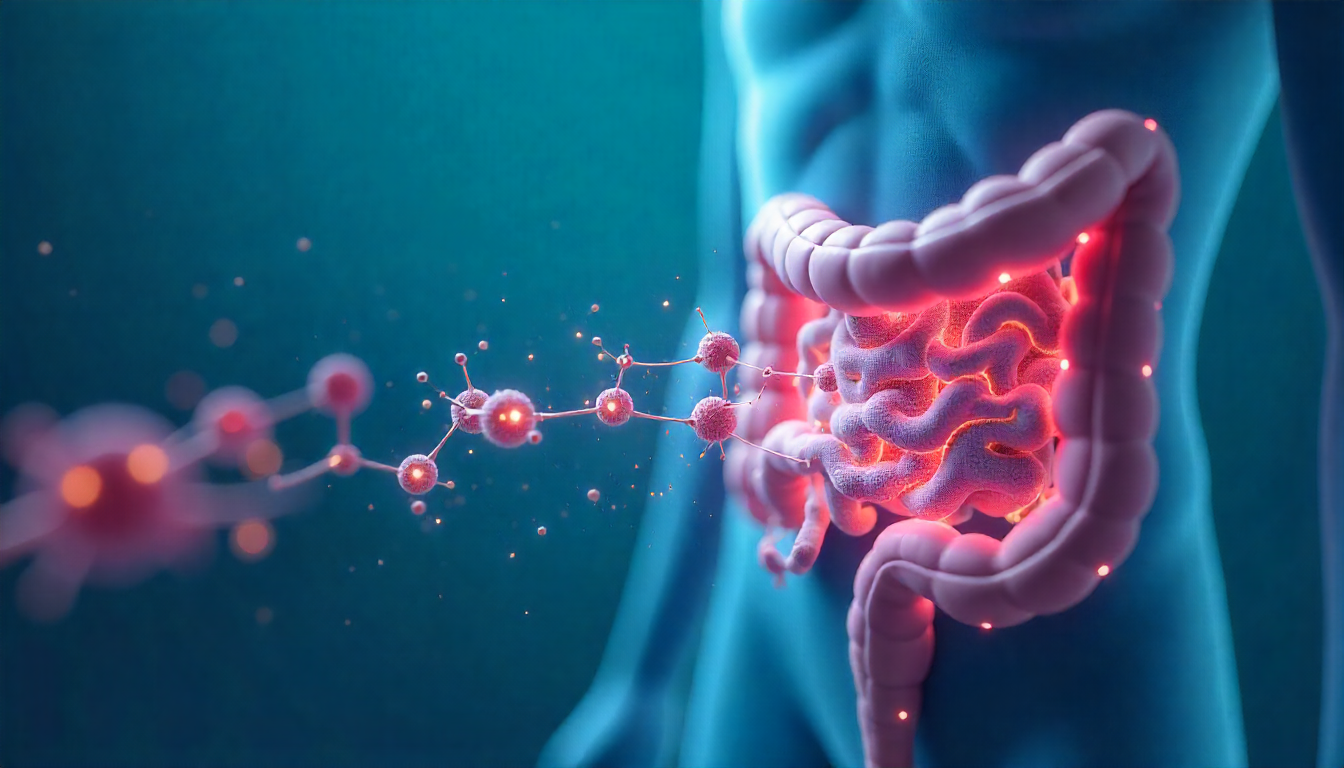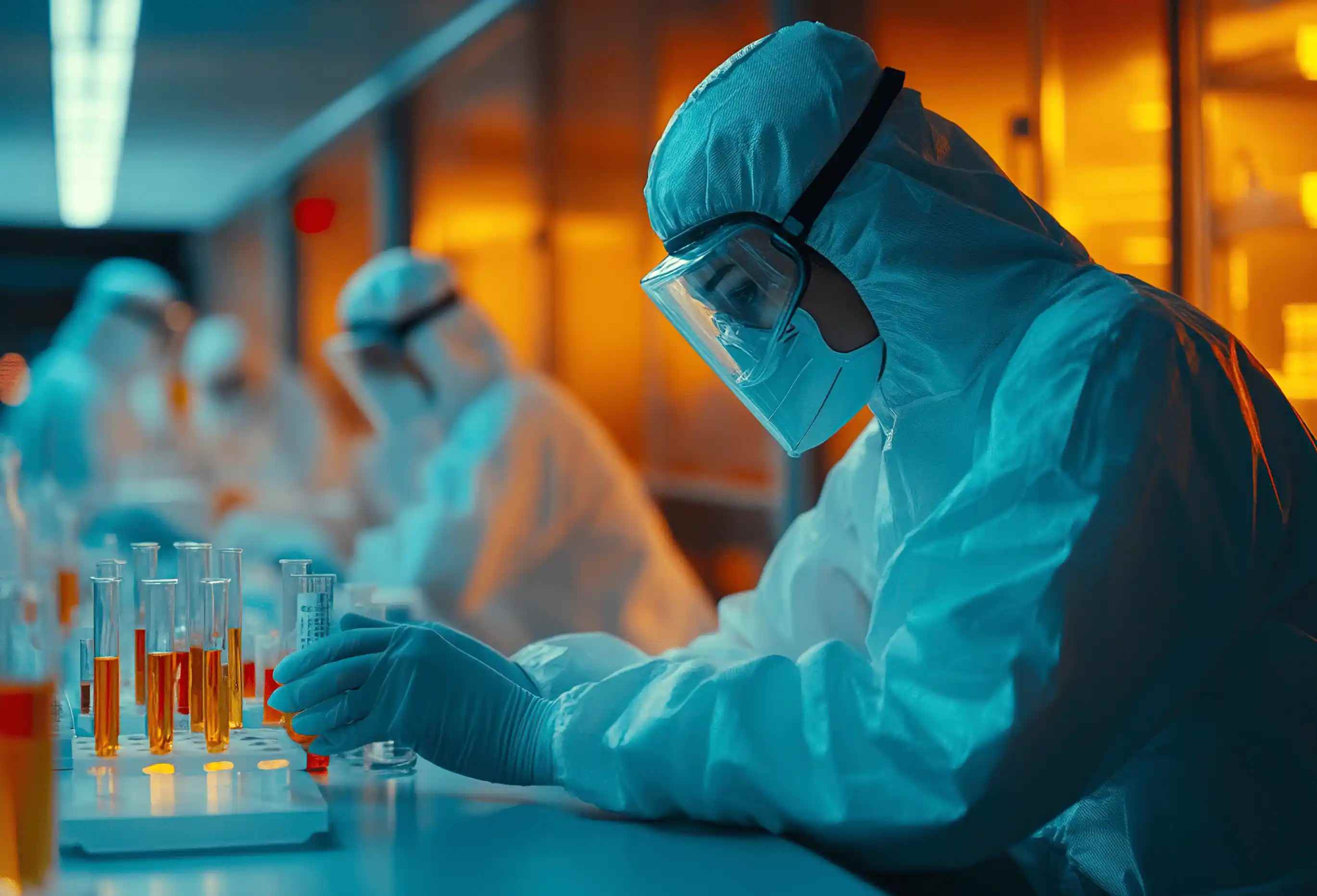
In the journey of drug discovery, one of the most critical hurdles researchers face is toxicity. Cytotoxicity, the ability of a compound to cause cell death, often becomes a bottleneck in preclinical and clinical stages, leading to drug attrition and costly setbacks. To address this challenge, SMAG has developed a cutting-edge in-silico cytotoxicity prediction model tailored for the human lung A549 cell line—one of the most widely used models in oncology research.
This AI-powered platform offers researchers a powerful tool to predict cytotoxic effects early in the drug development pipeline, enabling smarter decisions, safer compound selection, and accelerated innovation in oncology drug discovery.
Why Focus on the A549 Cell Line?
The A549 cell line, derived from human alveolar basal epithelial cells, is a cornerstone in cancer and respiratory disease research. Its relevance to lung cancer makes it an essential model for studying cytotoxic responses to new compounds. Accurate prediction of cytotoxicity in this cell line ensures that only the most promising drug candidates advance further, saving valuable time, cost, and resources.
By leveraging machine learning, SMAG’s cytotoxicity prediction model allows researchers to:
- Identify potentially harmful compounds before extensive laboratory testing.
- Reduce the reliance on animal models and high-cost in-vitro studies.
- Enhance the efficiency of lead optimization by prioritizing safer molecules.
Model Highlights
SMAG’s A549 cytotoxicity prediction model integrates advanced machine learning techniques with robust datasets to deliver exceptional performance. Key features include:
Key features include:
- AI-driven Binary Classification: Trained on carefully curated ChEMBL datasets, the model distinguishes between cytotoxic and non-cytotoxic compounds with high reliability.
- Outstanding Performance Metrics: Achieves 88% accuracy and an AUC-ROC of 97% in external validation, ensuring dependable predictions across diverse chemical spaces.
- Broad Molecular Compatibility Free from SMILES length restrictions, making it adaptable for a wide variety of molecular structures.
- Optimized for High-Throughput Screening: Enables researchers to process large compound libraries efficiently.
- User-Friendly Web Interface:Provides seamless accessibility, ensuring that even non-expert users can integrate the model into their workflow.

Benchmarking Against State-of-the-Art Models
The performance of SMAG’s model stands out when compared with a leading state-of-the-art (SOTA) cytotoxicity prediction model:
| Model | Accuracy (%) | AUC-ROC (%) |
|---|---|---|
| SMAG Model | 88.00 | 97.00 |
| SOTA Model | 79.00 | 81.00 |
These results highlight a dramatic improvement, with SMAG’s model nearly doubling predictive accuracy and achieving a near-perfect AUC-ROC. Such performance underscores its potential to redefine industry standards for cytotoxicity prediction.
These results demonstrate that the TOPIA model not only improves prediction accuracy but also provides more balanced classification, with high sensitivity (ability to detect inhibitors) and specificity (ability to detect non-inhibitors).
Driving Innovation in Drug Discovery
At SMAG, innovation is about creating tools that empower researchers to make better decisions faster. By integrating AI and machine learning into toxicology assessments, the A549 cytotoxicity model exemplifies how in-silico solutions can transform early-stage drug discovery.
This advancement doesn’t just match current benchmarks—it sets new ones. Researchers can now navigate the complex landscape of oncology drug development with greater confidence, knowing they have a model that delivers accuracy, scalability, and reliability.
Conclusion
Toxicity will always be a central concern in drug development, but with tools like SMAG’s A549 cytotoxicity prediction model, researchers can mitigate risks earlier, streamline their pipelines, and focus resources on the most promising therapeutic candidates.
This model represents more than just a technological achievement—it reflects a vision for faster, safer, and smarter drug discovery powered by artificial intelligence.











